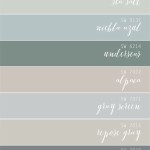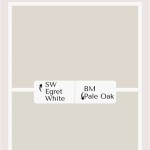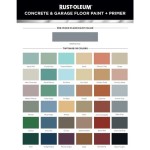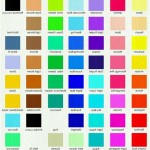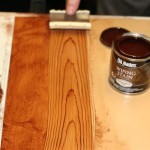Best Colour To Paint Wooden Fence: A Comprehensive Guide
Selecting the optimal colour for a wooden fence involves careful consideration of various factors. The choice extends beyond mere aesthetics, encompassing practical aspects like durability, maintenance, and the overall impact on the surrounding environment. This article explores the critical factors that influence the selection of the best colour for a wooden fence and provides insights into popular colour choices.
Factors to Consider When Choosing a Fence Colour
Several key factors should inform the decision when selecting a fence color. Neglecting these considerations can lead to aesthetic dissatisfaction and potentially reduce the lifespan of the fence itself.
1. Environmental Factors: The surrounding environment plays a significant role in determining the suitability of a fence colour. Exposure to sunlight, humidity, and variations in temperature can all affect the long-term appearance and durability of the chosen colour. Dark colours, for example, tend to absorb more heat, leading to expansion and contraction of the wood, which can cause cracking and warping over time. Lighter colours, on the other hand, reflect more sunlight, helping to keep the wood cooler and preventing excessive temperature fluctuations.
Additionally, the local climate should be considered. In areas with high humidity, colours that are resistant to mildew and algae growth are preferable. Coastal environments may require colours that are more resistant to salt spray and corrosion. Furthermore, the presence of trees and vegetation can influence the appearance of a fence colour. Darker colours may blend in too much with dense foliage, while lighter colours can provide a better contrast and enhance the aesthetic appeal of the property.
2. Aesthetic Considerations: The aesthetic appeal of a fence colour is inherently subjective but should align with the overall style and design of the property. The colour of the house, the landscaping, and the surrounding architectural features should all be taken into account. A well-chosen fence colour can complement the existing elements, creating a cohesive and visually pleasing environment.
Consider the desired effect. A neutral colour like white or beige can create a classic and timeless look, while bolder colours can add a touch of personality and create a focal point. However, it's crucial to ensure that the chosen colour does not clash with the existing colour scheme of the property. Using colour swatches and visualizing the fence colour in different lighting conditions can help in making a more informed decision.
3. Practical Considerations: Practical considerations involve maintenance, upkeep, and the ability of the colour to conceal dirt and imperfections. Darker colours, while visually appealing, tend to show dust, dirt, and fading more readily than lighter colours. This necessitates more frequent cleaning and maintenance to keep the fence looking its best. Lighter colours, conversely, may conceal dirt and fading more effectively, reducing the need for frequent cleaning.
The type of wood used for the fence also influences the choice of colour. Certain types of wood, such as redwood and cedar, have natural tones and grains that may be enhanced or obscured depending on the chosen colour. Transparent or semi-transparent stains can highlight the natural beauty of the wood, while opaque paints can completely cover it. The condition of the wood is also a factor. Older fences may have imperfections and discoloration that are better concealed with darker or more opaque colours.
4. Regulatory Factors: In some communities, homeowner's associations (HOAs) or local ordinances may dictate the permissible colours for fences. It is necessary to check with the relevant authorities before selecting a fence colour to ensure compliance with local regulations. Violating these regulations can result in fines or the requirement to repaint the fence. Understanding the regulatory landscape helps prevent potential legal issues and ensures a smooth and hassle-free installation process.
Popular Fence Colour Choices
While personal preference remains paramount, some fence colours are consistently popular due to their versatility, aesthetic appeal, and practical benefits.
1. White: White is a classic and timeless choice for wooden fences. It offers a clean, crisp look that complements a wide range of architectural styles and landscaping designs. White fences create a sense of openness and can make smaller yards appear larger. However, white fences require more frequent cleaning to maintain their brightness and prevent the build-up of dirt and mildew. The type of white paint selected also matters. Some whites are brighter and more modern, while others have warmer undertones and lend themselves to a more traditional aesthetic.
Consider the surrounding environment when choosing white. In areas with heavy shade from trees or shrubbery, a bright white can create a striking contrast. However, in extremely sunny environments, a brighter white may become too glaring. A slightly muted or cream-toned white may be more suitable in these situations. It's important to choose a high-quality, exterior-grade paint specifically designed for wood fences to ensure durability and resistance to weathering.
2. Beige and Cream: Beige and cream colours offer a softer and more subtle alternative to white. These neutral tones blend well with natural surroundings and provide a warm and inviting appearance. Beige and cream fences tend to conceal dirt and weathering better than white fences, reducing the need for frequent cleaning. These colours are well-suited for properties with traditional or rustic architectural styles.
Variations within beige and cream offer numerous options to customize the look of the fence. Some beiges have slightly pink or yellow undertones, while others lean towards a more greyish hue. These subtle differences can significantly impact the overall aesthetic of the fence and should be carefully considered in relation to the colours of the house and landscaping. Lighter shades of beige or cream can make a space feel larger, while darker shades can add depth and sophistication.
3. Grey: Grey has become an increasingly popular choice for wooden fences in recent years. It offers a modern and sophisticated look that complements contemporary architectural styles. Grey fences can blend seamlessly with natural landscapes, creating a sense of harmony and tranquility. Grey also tends to conceal dirt and weathering effectively, requiring less frequent cleaning than lighter colours.
A wide range of grey shades are available, from light and airy to dark and dramatic. Light greys can create a subtle and understated look, while darker greys can add a sense of depth and visual interest. Charcoal grey is a particularly popular choice for modern homes, providing a striking contrast against lighter siding materials. When selecting a grey paint, it's important to consider the undertones. Some greys have bluish or greenish undertones, while others lean towards a warmer, more brownish hue. These undertones should complement the existing colours of the property.
4. Brown: Brown is a natural and earthy choice for wooden fences. It blends seamlessly with natural surroundings and creates a warm and inviting atmosphere. Brown fences are particularly well-suited for properties with rustic or traditional architectural styles. Transparent or semi-transparent brown stains can highlight the natural grain and texture of the wood, adding to the rustic appeal.
Similar to grey, brown colours are available in a wide range of shades, from light tan to dark chocolate. Lighter browns can create a more open and airy feel, while darker browns can add depth and richness. It is imperative to select a brown colour that complements the existing wood tones of the house and landscaping. Overly dark brown fences can make a small yard feel even smaller, while overly light brown fences can appear washed out in strong sunlight.
5. Dark Colours (Black, Navy): While dark colours absorb more heat and may fade more quickly, they can offer a dramatic and sophisticated look for wooden fences. Black fences, in particular, have become increasingly popular in modern architectural designs. Dark colours can create a strong visual statement and provide a sense of privacy and security. However, dark fences require more frequent maintenance to prevent fading and the build-up of dirt and dust.
When using dark colours, it is essential to choose a high-quality, exterior-grade paint that is specifically formulated to resist fading and weathering. Regularly cleaning the fence is also necessary to maintain its appearance. Dark colours can be particularly effective when used in conjunction with lighter landscaping elements, such as white gravel or brightly coloured flowers. Consider the size of the yard when using dark colours. In small yards, a dark fence can make the space feel even smaller. In larger yards, a dark fence can create a sense of enclosure and privacy.
Preparation and Application for Optimal Results
Regardless of the chosen colour, proper preparation and application are crucial for achieving a durable and aesthetically pleasing finish. Neglecting these steps can result in peeling, cracking, and premature failure of the paint or stain.
1. Surface Preparation: Thoroughly clean the fence surface to remove any dirt, debris, mildew, or loose paint. Use a pressure washer with a mild detergent to clean the wood, ensuring that the pressure is not too high to damage the surface. Allow the wood to dry completely before proceeding with painting or staining. For older fences, sanding the surface may be necessary to remove any rough spots or imperfections. Repair any damaged or rotten wood before applying the finish.
2. Priming: Applying a primer is essential for new or bare wood. Primer helps to seal the wood, creating a uniform surface for the paint or stain to adhere to. Choose a primer that is specifically designed for exterior wood surfaces. Apply the primer evenly using a brush, roller, or sprayer. Allow the primer to dry completely before proceeding with painting or staining.
3. Application: Apply the paint or stain in thin, even coats, following the manufacturer's instructions. Use a high-quality brush, roller, or sprayer to ensure a smooth and consistent finish. Avoid applying too much paint or stain at once, as this can lead to drips and runs. Allow each coat to dry completely before applying the next coat. Two coats of paint or stain are typically recommended for optimal protection and durability.
4. Maintenance: Regularly inspect the fence for any signs of wear and tear, such as peeling, cracking, or fading. Clean the fence periodically to remove dirt and debris. Touch up any damaged areas as needed. Reapply a fresh coat of paint or stain every few years to maintain the fence's appearance and protect it from the elements.

Fence Paint Color Ideas To Boost Curb Appeal Wow 1 Day Painting

Fence Painting Ideas That Will Make The Difference

Choosing The Right Colour For Your Fence Makeovers

14 Best Backyard Fence Color Ideas For Stain Or Paint

Fence Painting Ideas That Will Make The Difference

7 Best Paint Choices For A Wood Fence

Best Fence Colours For Small Garden The Paint Guide

Top 10 Wonderful Timber Fence Colors For 2025 Pentagon

Fence Paint Color Ideas To Boost Curb Appeal Wow 1 Day Painting

Wooden Fence Stain Colors That Will Wow My Neighbors Olympic
Related Posts


